Dethatching St. Augustine grass is a matter of hot debate among gardening experts in the horticulture world. Of course, you can go ahead and dethatch your St. Augustine turf anytime, but the actual question is: should you?
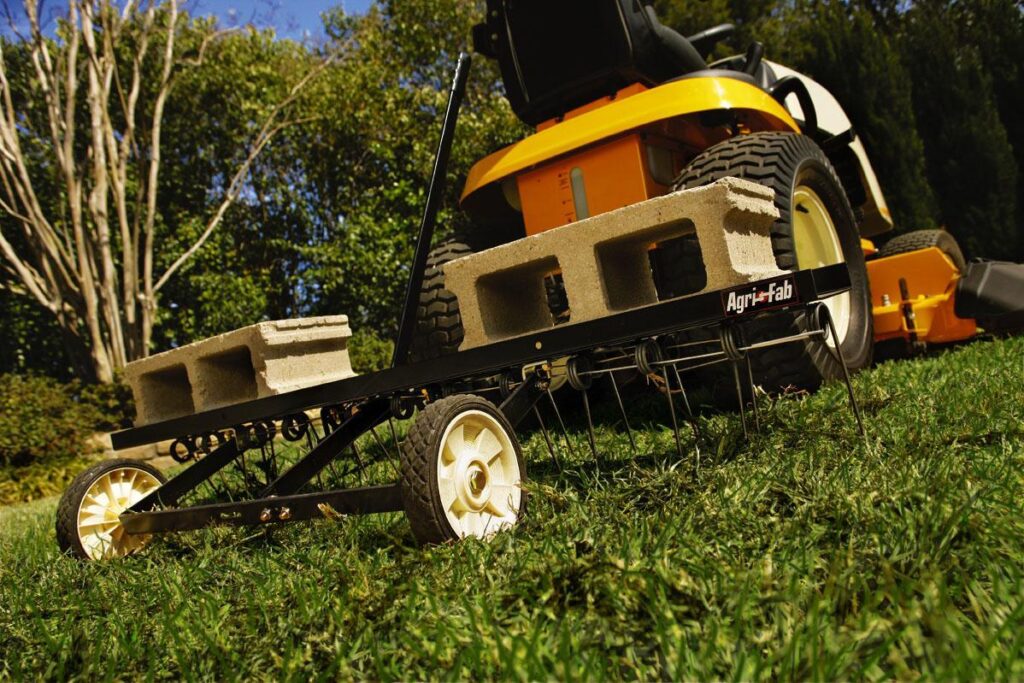
Dethatching aids water, nutrients and air in penetrating deeper into the soil.
Well, we all know that dethatching is beneficial for the grass as long as it is done correctly and in a professional manner. So, why do so many people are against dethatching St. Augustine grass? It is because dethatching a St. Augustine lawn is a risky business.
If done incorrectly (at the wrong time or using the wrong tools), it can leave your turf damaged. Dethatching St. Augustine grass is not needed unless thatch layer becomes thick and starts causing problems. Also, when you dethatch your lawn, do not use a core aerator. Instead, use a verticutter or hand rake to get the job done.
Thatch In St. Augustine Grass

St. Augustine grass is the most shade-tolerant of all the warm-season grasses.
St. Augustine grass is among the most favored turfgrass species in hotter climates because of its vivid green color, natural density, and resilience. However, because of its ability to form a dense, thick mat, detecting thatch in St. Augustine grass can be quite tricky, especially during the initial stages. In fact, many people do not even realize that they have a thatch problem in their St. Augustine grass until it’s too late.
Broadly speaking, thatch is primarily dead grass that accumulates over the turf as time goes by. However, other than grass clipping, thatch can also contain leaves and other debris that settles and rests on your lawn over time. If this layer of thatch becomes too thick, it can create all sorts of problems for your turf.
For instance, a thick thatch layer acts as a barrier between lawn soil and the environment, making penetration of the water, air and nutrients to the grassroots difficult. However, not all thatch is bad for the lawn. In fact, a thin layer of thatch is beneficial. It helps retain moisture and prevents grass from drying out.
So, when should you dethatch your St. Augustine lawn? Keep reading to find out.
RELATED: How To Properly Aerate Bermuda Grass Lawn | Best Time To Aerate Your Bermuda Lawn
Should You Dethatch St. Augustine Grass?
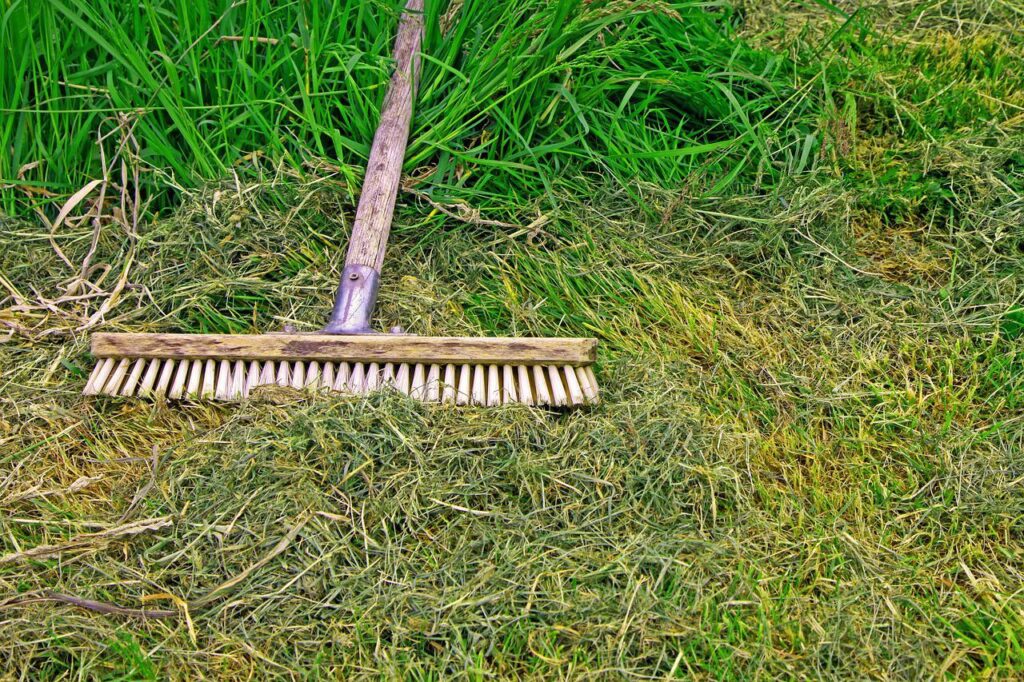
A thick thatch layer can make the grass more prone to insect and fungal infestations.
The answer to this question depends on the extent to which thatch has accumulated over your St. Augustine turf. If the thatch layer becomes too massive, it will hinder water, air, and nutrients from penetrating the lawn soil and prevent grass from spreading.
It is because St. Augustine grass spreads via above-ground stolons or runners. So, a thick thatch layer will prevent the runners from establishing new roots in the soil. As a result, grass will spread slowly and it will be a long time before your lawn fills up.
In addition to that, excessive thatch build-up can also make the grass more prone to pests and fungal infections. On the other hand, if the thatch layer is not thick and causing any problems, you should leave it alone.
A thin thatch layer is beneficial for the grass as it will degrade, returning nutrients to the soil. Also, it will help retain the moisture which will prevent grass from drying out.
When Should I Dethatch My St. Augustine Lawn?
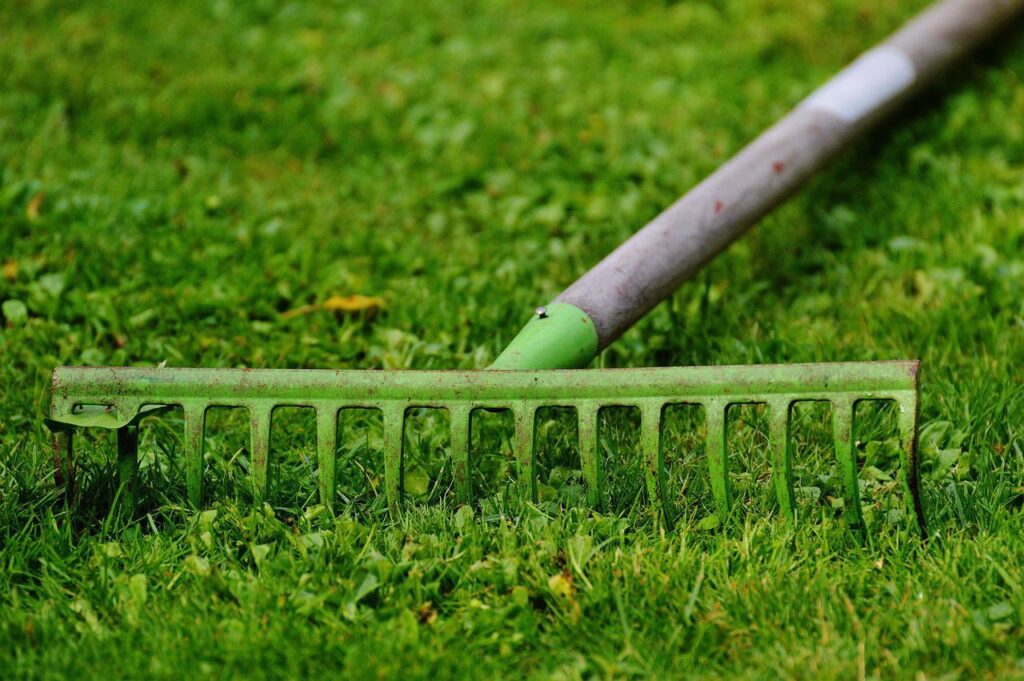
Do not dethatch St. Augustine lawn in fall.
The best time to dethatch St. Augustine grass is in the spring. During this time, St. Augustine grass exits dormancy and grows very actively. Dethatching places stress on the grass. So, if you dethatch the St. Augustine grass in spring, it allows it to recover as the active growth season lasts till the end of the summer.
That is the exact reason why you should not detach your St. Augustine lawn in fall or winter. It will put your Augustine turf under enormous stress. It will struggle to recover and may die in places as it enters dormancy.
How Often Should I dethatch St. Augustine Grass?
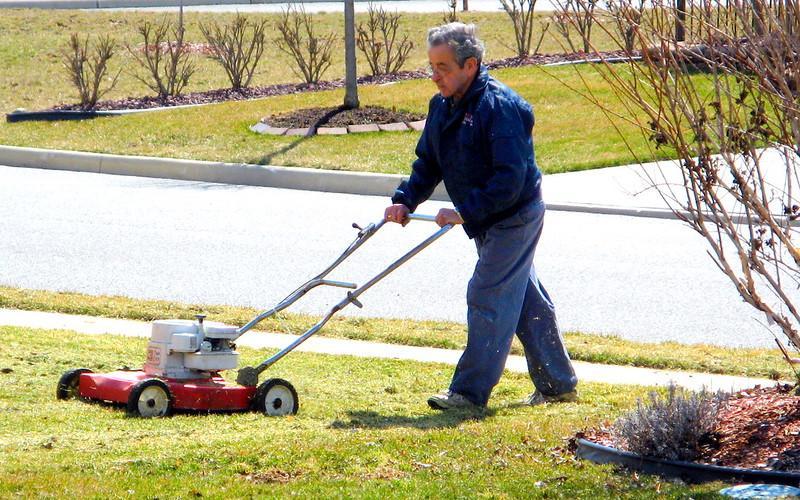
Different cultivars of St. Augustine grass need to be detached with different frequencies.
Well, you should dethatch your lawn as many times as needed. The cultivar of St. Augustine grass that you are growing on your lawn is the most significant determinant of the frequency with which you will need to dethatch your St. Augustine lawn.
Depending on the variety present in your lawn, you might have to dethatch your lawn every year or, for some types, maybe after two years. The dethatching frequency will also be affected by the mowing height of your lawn.
If you mow too low, the size of the grass clippings will be larger, and if not removed, they will accumulate over the grass, creating thatch. In contrast, if you mow too high and remove the grass clippings regularly, you will need to dethatch your lawn less frequently.
What Causes Thatch In St. Augustine Grass?
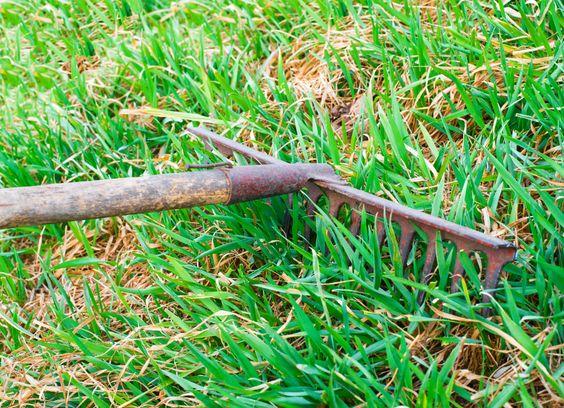
Thatch production is a natural process that every grass is prone to.
Thatch will start accumulating on the St. Augustine grass if its production exceeds the amount of thatch that is being broken down. Grass also contains a chemical called “lignin,” which makes grass clippings very slow to break down and degrade.
So, when the grass does not rot, the grass clippings start to build up, layer after layer, that is thatch. However, other than slow decay of grass clipping, many factors can increase thatch build-up on your St. Augustine lawn.
Let’s discuss those factors briefly so that you have a better understanding of thatch build-up on St. Augustine lawns. Also, it will help you choose the best treatment plan for your lawn.
Dead Soil
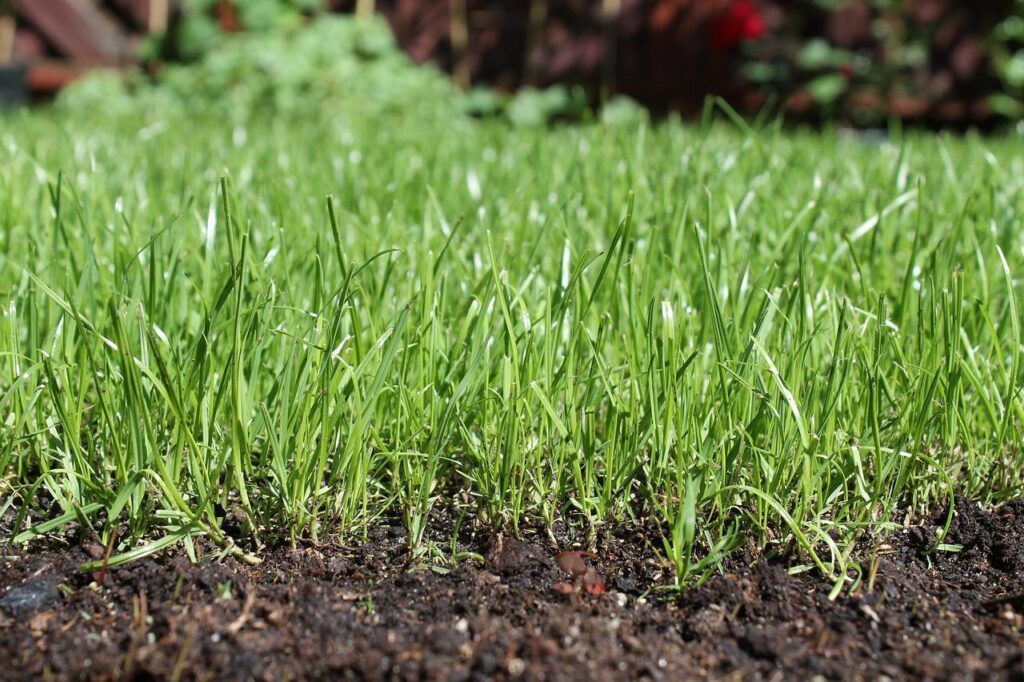
Microbes break down organic matter in dead grass which reduces thatch formation.
If the soil of your lawn has reduced microbial activity, reduced diversity of microbes and other beneficial creatures, thatch will build up faster over your turf. This is because soil microbes play a crucial role in degrading the organic matter which reduces thatch formation.
Research has proved that microorganism and earthworm activity is crucial in preventing excess thatch formation on lawns. Microorganisms and soil creatures cannot thrive if the soil is too acidic or compacted.
That is why excessive thatch build-up is common in compacted soil and soils with a highly acidic pH. In addition, excessive use of chemical herbicide is another reason your lawn soil might be low in microbial diversity, which will lead to increased thatch formation as well.
Overfertilization
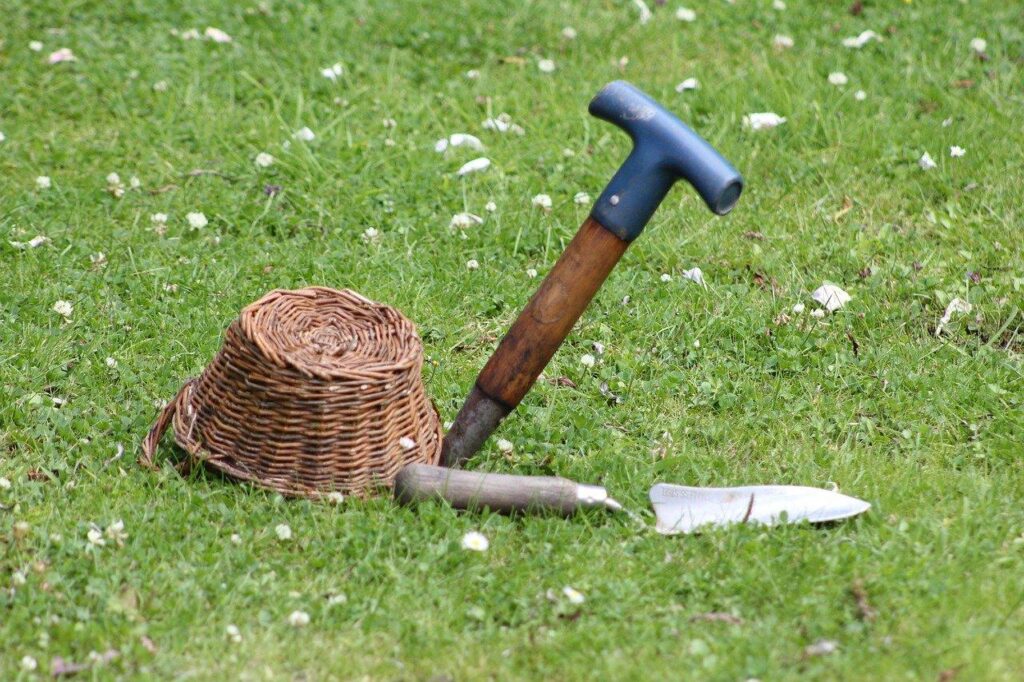
Fertilizer increases grass growth which increases dead grass and thus, thatch build-up.
Another reason why thatch might build very quickly and at an increased rate on your lawn is when you use too much fertilizer. Thatch build-up can become especially problematic if you use excess nitrogen fertilizer on your grass.
It is because nitrogen fertilizer increases the rate at which the grass tissues form. The more grass tissues form, the more dead grass will accumulate on the lawn in the future. In addition, some nitrogen fertilizer also makes soils acidic which increases thatch build-up as well.
Improper Watering
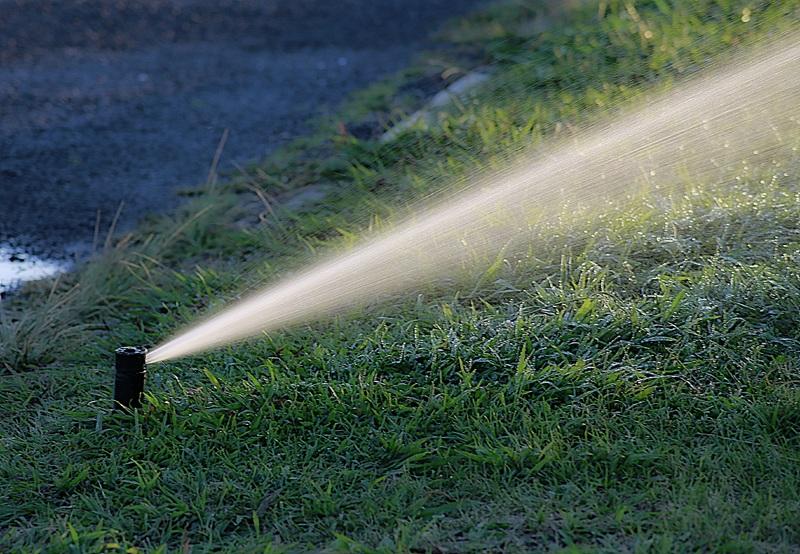
Excess water can cause compaction issues which increase thatch build-up.
Watering your St. Augustine lawn improperly can also cause the excess build-up of thatch on your lawn. It is because the microorganisms that degrade the organic matter present in thatch need air to do their job. If the soil is wet or soggy all the time, it will reduce its air content. As a result, microbial activity will be severely affected.
In addition to that, overwatering the lawn can also create compaction issues in your lawn soil. Compacted soil also reduces the speed at which thatch gets degraded. As a result, thatch will start building up faster and create problems for your lawn.
RELATED: How to Manage St. Augustine Grass Runners: A Comprehensive Guide
Soil Type
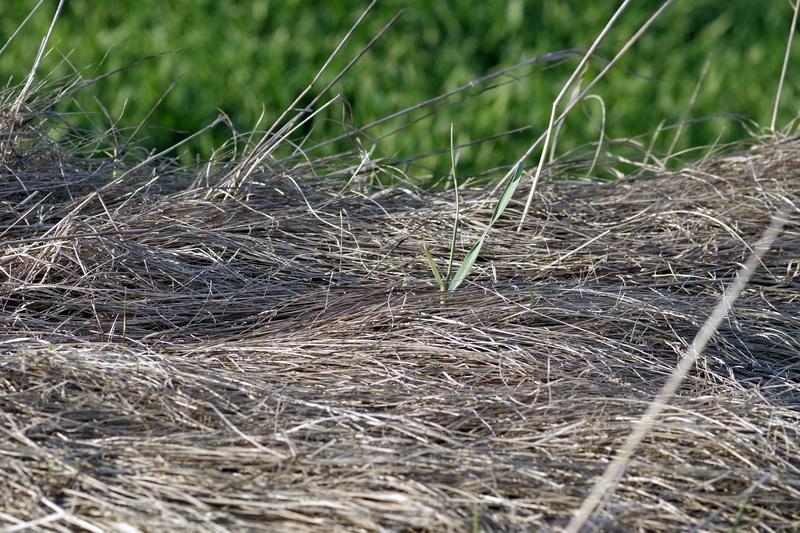
Soil type is also an important determinant of the speed at which thatch builds up.
The soil type in your Augustine lawn is another critical determinant of thatch build-up. For instance, sandy soils have low diversity and population of microbes. This means that the degradation of grass will take longer, and thatch will accumulate at a greater rate.
On the other hand, if your St. Augustine grass is grown on soil high in loam, the thatch build-up rate will be significantly reduced. It is because soils high in loam contain a more significant population and diversity of soil microbes, making grass degradation faster.
Poor Aeration
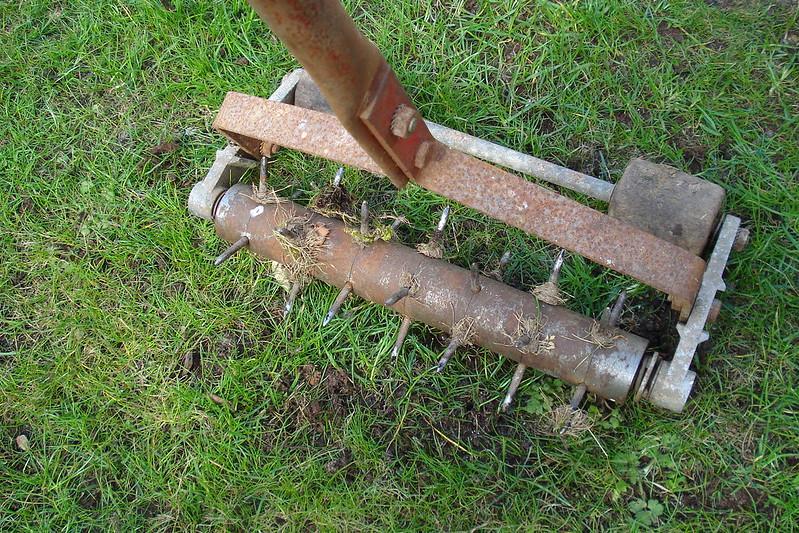
Soil too low in oxygen can also deal with excess thatch formation.
As already stated, soil microbes need a good supply of oxygen in order to degrade the organic matter present in the dead grass. Therefore, if the air supply decreases for any reason, microbe activity will also diminish, resulting in increased thatch build-up over the surface of your St. Augustine turf.
How Do You Get Rid Of Thatch In St. Augustine?
You will have to dethatch it, obviously, but to safely dethatch your St. Augustine grass, you will need the right tools, some good techniques, and a bit of patience. Using the wrong tools or the wrong dethatching method can severely damage your lawn. Here is how you can dethatch your St. Augustine grass correctly:
Mow The Lawn

Mowing too low can damage grass stolons, leaving your grass weak and vulnerable.
Before dethatching your Augustine grass, you will have to prep it by mowing. Mowing will remove the grass blade and allow the dethatcher to easily reach and remove the thatch layer from beneath the grass blades. However, choosing the proper mowing height is very important to avoid damage to the grass.
For instance, if you mow too low, you will risk cutting a lot of stolons which will negatively impact the health of your St. Augustine grass. On the other hand, if you mow too high, the grass blades will become a barrier between thatch and dethatcher.
So, we suggest that you mow the grass at 2 inches. It will allow the dethatcher to access the thatch easily. Also, by dethatching at two inches, you will not cut many stolons, avoiding any significant damage to your St. Augustine grass.
Water The Lawn
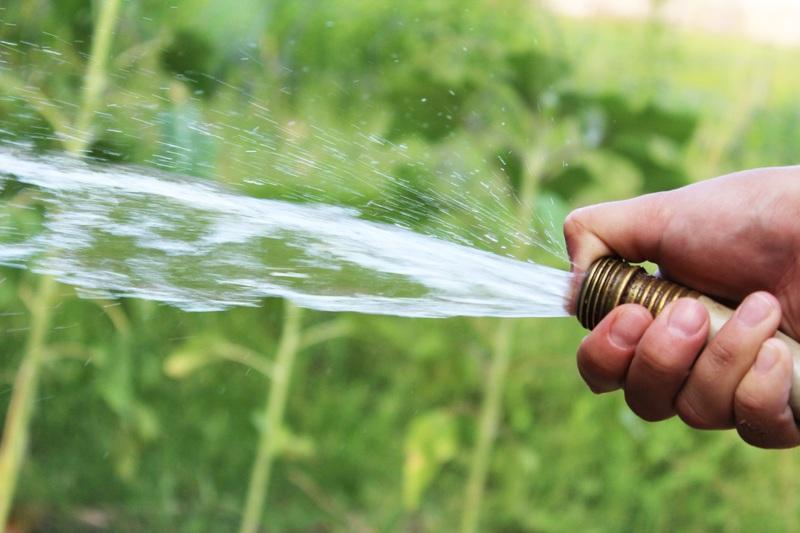
Watering the lawn before dethatching will make the task a bit easier.
Another thing you need to do before dethatching the St. Augustine grass is to water your lawn. It will make the hard-packed thatch a bit loose, and then you will be easily able to remove it using a dethatcher.
However, make sure that you do not overwater the lawn as it can make your lawn muddy, which will make dethatching difficult. Also, on a muddy lawn, there is a considerable risk that you will yank up large patches of Augustin grass, making the thatch issue even worse.
Run The Dethatcher
Once you have mowed your St. Augustine grass and made the thatch softer by watering the lawn, you can move on towards dethatching your St. Augustine grass. There are two ways in which you can dethatch your St. Augustine lawn:
Using A Vertical Mower
Also known as verticutter, a vertical mower looks like a traditional mower; however, it replaces the single horizontal blade with multiple vertical tines or blades. To dethatch the lawn property using a verticutter, set the blades three inches apart and only pass it over grass one time. It will pull up the thick thatch layer, and then you can then collect the loose thatch using your hands.
Using A Hand Rake
If a lawn is of small size, we highly recommend that you use a hand rake. Even though using a hand rake is a tiresome task, it is worth the effort. It can even work on an uneven lawn and fit in places where a vertical cutter might not work.
Nonetheless, whichever tool you use to dethatch your St. Augustine lawn, make sure that you remove as much thatch as possible. Leaving thatch on your St. Augustine can cause additional thatch build-up and make your grass prone to pests such as chinch bugs.
Aerate The Lawn
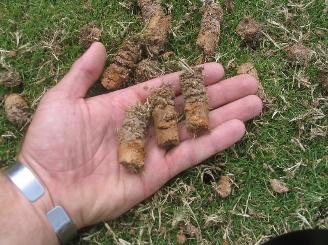
Aeration can help soil microbes to degrade the thatch faster.
Once you are done dethatching your St. Augustine lawn, the next thing you should do is aerate the soil. Aeration will help the soil microbes decompose the organic matter present in the thatch faster. Also, you will achieve much better aeration after dethatching your lawn as the aerator now does not have to work through the thick thatch.
Apply Fertilizer
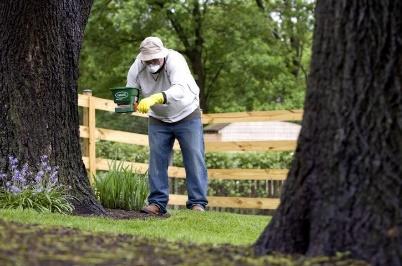
Do not use a fast-release fertilizer in your yard if you want to avoid thatch.
Lastly, you should apply a slow-release fertilizer to your St. Augustine grass. It will help the grass recover from the stress of dethatching and boost grass growth. Moreover, slow-release fertilizer will not promote thatch build-up on your lawn.
Do Not Use Power Rake To Dethatch St. Augustine Grass
We know that using a hand rake to dethatch your St. Augustine lawn can be quite dull and tiresome. But it is worth the effort. Also, you can always use a verticutter or vertical lawn mower to dethatch your St. Augustine grass.
However, in no case should you use a power rake to dethatch your St. Augustine grass. It will remove a lot of grass stolons and damage your entire turf. St. Augustine grass mainly uses stolons (above-ground stems) to spread. So, you can imagine how much stress a power rake will put on your grass when it removes the stolons.
Do Not Dethatch In Fall
Since St. Augustine is a warm-season grass and enters dormancy during fall and winter, you should never detach it in these months. Dethatching puts enormous stress on St. Augustine grass, and if you dethatch the lawn during dormancy, it will kill most of the grass. Furthermore, there are very low chances that grass can recover from dethatching stress during its period of dormancy. So, beware of dethatching St. Augustine in the fall.
Sources for Further Reading
- St. Augustine grass Yearly Maintenance Program. Clemson University Cooperative Extension Service. (2022). Retrieved 15 May 2022, from https://hgic.clemson.edu/factsheet/st-augustinegrass-maintenance-calendar/
- Managing Thatch in Home Lawns. University of Missouri Extension Service. (2022). Retrieved 15 May 2022, from https://extension.missouri.edu/publications/g6708
- St. Augustine Grass – Gardening Solutions – University of Florida, Institute of Food and Agricultural Sciences. (2022). Retrieved 15 May 2022, from https://gardeningsolutions.ifas.ufl.edu/lawns/turf-types/st-augustinegrass.html
Aside from dethatching St Augustine grass, make sure to check out our other articles:
How to Plant Bermuda Grass | Bermuda Grass Growth Stages and Care
Is Sand Good For Lawns? (and What Type of Sand for Lawns Is Best)
What Is Causing Bumps In My Lawn? And How To Get Rid Of Small Dirt Mounds!







